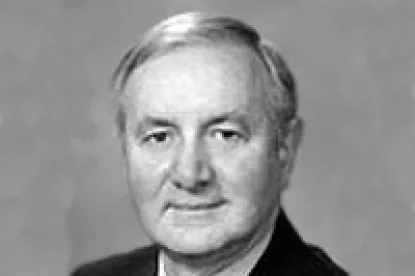In her first speech as Assistant Attorney General in charge of the Antitrust Division, Christine Varney called for a return to vigorous antitrust enforcement and repudiated the Bush Administration's eight month old report on how the Antitrust Division would evaluate single firm conduct under Section 2 of the Sherman Act, Competition and Monopoly: Single-Firm Conduct Under Section 2 of the Sherman Act, United States Department of Justice (2008) ("Report").
In remarks to the Center for American Progress on May 11th, Ms. Varney stated that lax antitrust enforcement during the 1920s and the early years of the Great Depression, particularly the industrial codes promulgated under the National Industrial Recovery Act, effectively foreclosed competition to the detriment of consumers. The results were restricted output, higher prices and reduced consumer purchasing power. Not until 1937 was there a revival of vigorous antitrust enforcement.
According to Ms. Varney, the lessons to be learned from that experience are twofold. First, there is no adequate substitute for a competitive market, particularly during times of economic distress. Second, vigorous antitrust enforcement must be a significant part of the Government's response to economic crises. In fact, she cited "inadequate antitrust oversight" as a factor which contributed to the current economic conditions.
Turning to the September 2008 Section 2 Report, Ms. Varney complemented it as a comprehensive evaluation of single-firm enforcement and a careful consideration of the risks and benefits of particular enforcement strategies. However, she stated that the Report's "greatest weakness" is that it raises many hurdles to Government antitrust enforcement.
Criticizing the Report for placing too much emphasis on preserving possible efficiencies and understating the importance of redressing exclusionary and predatory acts, she asserted that the Report loses sight of an "ultimate goal" of antitrust, the protection of consumer welfare. She particularly criticized the Report's endorsement of the "disproportionality test," which requires that the anticompetitive harm must substantially outweigh procompetitive benefits in order to be actionable. She withdrew the Section 2 Report and declared that the Division was going "back to the basics" in evaluating single firm conduct.
Ms. Varney cited to the Supreme Court's decisions in Lorain Journal, 342 U.S. 143 (1951) and Aspen Skiing Co., 472 U.S. 585 (1985) as examples of "tried and true standards" of how monopoly firms are permitted to behave. These cases reject the claim that a dominant firm has the unqualified right to refuse to deal with anyone it chooses. Going forward, the Division will look closely at both the perceived procompetitive and anticompetitive aspects of a dominant firm's conduct, weigh those factors, and determine whether on balance the net effect of that conduct harms competition and consumers.
Turning to Section 1 enforcement, Ms. Varney expressed concern that the recent infusion of vast amounts of federal funding into the economy may lead to increased collusion and fraudulent activity. She identified this as a focal point for criminal enforcement and stated that the Antitrust Division has dedicated significant resources to assisting public agencies in detecting and deterring criminal antitrust offenses.
Ms. Varney promised to continue the Division's push forward with civil merger and non-merger enforcement. Although not providing any specifics, she said that the Division will explore vertical theories and other new areas of civil enforcement, such as those arising in high-tech and Internet-based markets. Noting the importance Americans place on high-tech solutions, she expressed her belief that the Antitrust Division will reclaim the position of enforcement leader in technology industries.
In concluding, she commented that market conditions have forced a critical analysis of previous enforcement approaches. That analysis makes clear that "passive monitoring of market participants is not an option."



 />i
/>i

